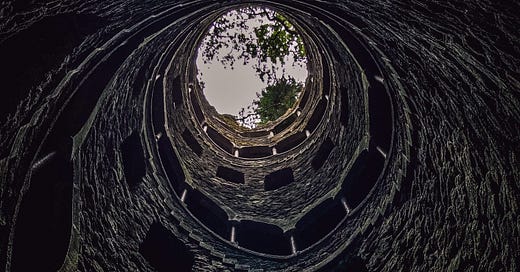the subterranean world of mockingjay: the final hunger games novel is obsessed with depths and hidden places
an ecocritical reading of mockingjay
Thank you so much to my paid subscribers who make everything I write here possible. That’s doubly true for big translation and commentary projects like Sir Gawain and the Green Knight, which take a lot of work and will all be posted for free. If you’d like to read more of my writing and support my work, you can become a paid subscriber for £4 per month and get an extra essay per week. Coming up soon we have a new series starting, close reading the earths and landscapes of classic ‘girlhood’ books, starting with Anne of Green Gables. If you would like to support me but aren’t able to become a regular paid subscriber, I also have a ko-fi tip jar here.
My first close reading post about The Hunger Games was about soil, topography, and the ways Katniss and the gamemakers compete to change landscapes and imagine new ones. My second close reading on Catching Fire was about artificial and natural light, and the tension between sparks of kindled fire and the bright floodlights the Capitol sets up for a photo shoot. (Read them, they’re good).
Mockingjay is the book in the series that I know least well by quite a long way. I didn’t even read it first time around as a teenager. I’ve seen the films a couple of times and I listened to the novel as an audiobook in maybe 2022 or so. But I’ve never stared at it in any detail or done anything involving highlighters. So I’ve always had a lot of unanswered questions about Mockingjay, even as I was reading it, and I went into this reread really not knowing what topic I was going to want to think about.
I knew, going in with the eyes of ecocriticism, that I would likely do what I did with the first two novels: choose an aspect of the non-human world or how people interact with it, and then track that as closely as I could across the breadth of the novel.
And of course, Mockingjay is a story about subterranean worlds. District 13 is something that returns from underground like a repressed memory bubbling back up through Panem. Beyond just District 13, though, this is a book about things that get buried and unburied, things put underground to be lost or not lost, things you go back and find later, things you didn’t think you’d find again. The Hunger Games was a book about walking on the soil and Mockingjay is a book about digging down into it. There are so many fascinating parts of this book to pick apart and close read the covering and uncovering, burying and unburying.
Is it good or bad to bury? Good or bad to dig back up? It’s both, and there are a lot of grey areas here.
One of the final images of the whole trilogy is Katniss saying, ‘My children, who don’t know they play on a graveyard’ (Mockingjay, p.972).1 There’s a huge amount of meaning in this simple image. There are a lot of layers of burying and covering here. The meadow was once a wild place until it was dug through to become a mass grave. The bodies of the people killed in the bombing massacre of District 12 are buried there. Many of these people died in the collapse of burning buildings, dying under rubble. They’ve been buried once, dug up, and buried again. This second act of burying causes multiple literal and figurative transformations to take place. The people of District 12, starving, poor, and given no respect by the capital, were killed without any respectful burial. When they are put in the ground they are made into honoured dead, people that someone cared enough to identify and bury, but they are also put away and forgotten. They are covered over by graveyard earth and then, in time, the graveyard is covered over by the meadow landscape. The fact people were buried here at all has been covered up — so much so that Katniss’ children don’t know it’s a graveyard at all. There are a lot of cogs turning here when we examine this one sentence, all the buryings and unburyings that take place.



